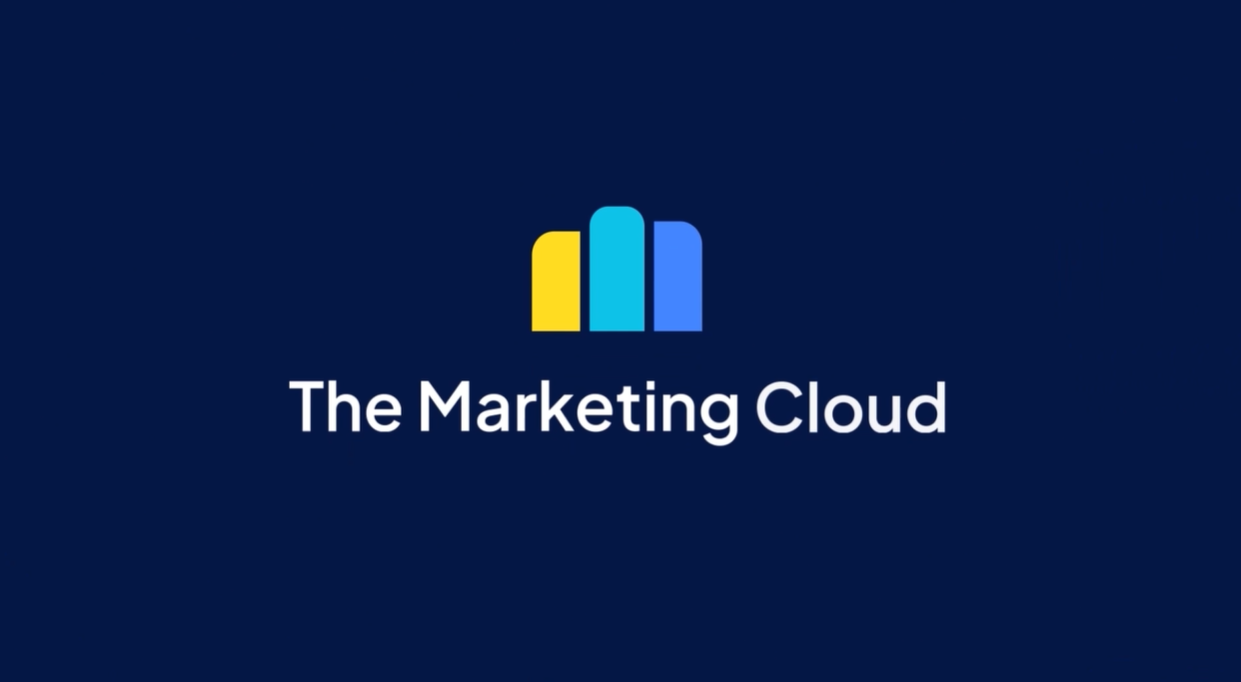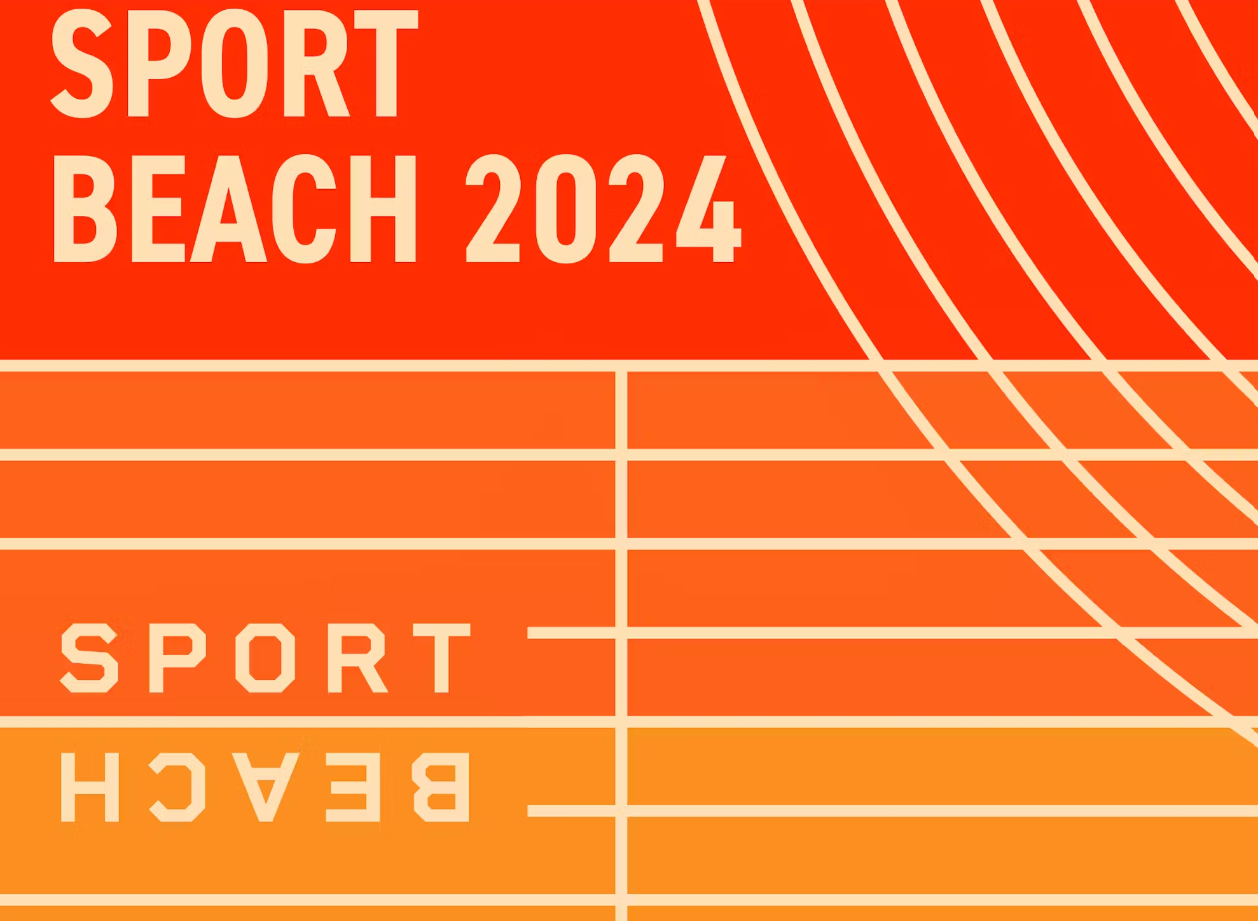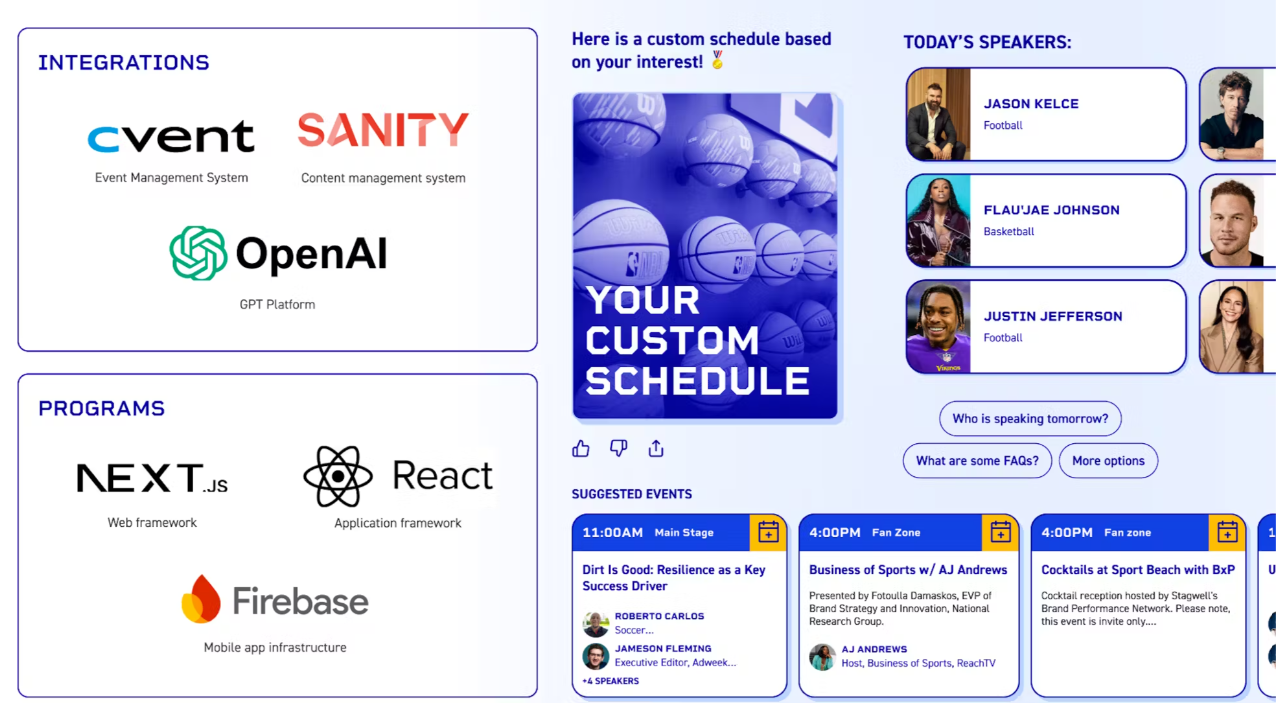Originally Released On
Contact:
Alyssa Bourne-Peters
PRophet, US
Alyssa.Bourne-Peters@prprophet.ai
+1 917 592 9795
Sarah Schulze
PRophet, EMEA
Sarah.Schulze@prprophet.ai
+49 16090815945
UNICEPTA’s Media Intelligence Capabilities Now Operate as ‘PRophet Media Intelligence’ Within the Comprehensive PRophet Comms Tech Suite
NEW YORK and COLOGNE, Germany, June 12, 2025 /PRNewswire/ — PRophet, a comms tech suite of essential, award-winning AI-powered software and services for modern communicators, today announced it has fully integrated UNICEPTA into the PRophet comms tech suite, following its acquisition of UNICEPTA in December 2024. UNICEPTA’s offerings will now operate under the PRophet brand family as “PRophet Media Intelligence,” joining a unified brand and enhanced suite of AI-powered software and services, positioning PRophet now as the third largest comms tech suite in the world.
The full PRophet Suite now houses three AI-powered SaaS and human-powered analytics solutions that empower PR and social media professionals to maximize their performance and productivity.
- PRophet Media Intelligence (F/K/A UNICEPTA): Offers comprehensive global media monitoring, market intelligence, and social listening tools, delivering unmatched insights and analysis to communicators worldwide.
- PRophet Earn: Deploys predictive, cognitive, and generative AI to help discover, target, and engage with the most relevant and interested high-authority journalists. and leading influencers.
- PRophet Influence: Powered by influencermarketing.ai, uses agentic-AI to power influencer discovery, analytics, brand safety, and tracking to inform and manage influencer marketing campaigns.
“Fully integrating UNICEPTA into PRophet allows us to provide clients with the technology, expertise and data they need to grow, protect and lead their enterprise communications,” said Aaron Kwittken, Founder and Global CEO of PRophet. “Not only does this rebrand mark a major milestone for client offerings and services but also realizes our global vision of ushering in and empowering a new generation of communications engineers with the unified tools they need in today’s complex media landscape.”
This integration will also bring new roles to UNICEPTA’s co-CEO’s, Sebastian Rohwer and Alexander Peinemann. Sebastian will become Chief Client Services Officer and Managing Director, Central Europe of PRophet and Alexander will become Chief Operating Officer and Chief Transformation Officer of PRophet.
As part of this integration and brand migration, PRophet launched a new website and refreshed visual identity, reflecting the brand’s evolution and commitment to innovation in the communications technology space.
With this integration and rebranding, PRophet enters a new phase of growth—firmly uniting global talent and markets, rapidly accelerating our mission to redefine what’s possible and deliver what’s next in modern communications.
For more information, visit www.prprophet.ai.
About PRophet
PRophet is a suite of AI-powered SaaS software and services designed to empower and support the next generation of human-led, AI-fed “communications engineers” working in the PR, social and influencer marketing community.
PRophet Media Intelligence (F/K/A UNICEPTA) is the largest provider of global media, market intelligence and social listening tools, delivering unmatched insights and analysis to communicators worldwide.
PRophet Earn harnesses predictive, cognitive and generative AI to help users discover, target and engage with high-authority journalists and leading influencers. This media relations solution creates and tests “mediable” PR content to predict journalist interest and sentiment.
PRophet Influence, powered by influencermarketing.ai, combines influencer discovery, analytics, brand safety and tracking technologies to inform and manage influencer campaigns with precision and performance in mind.
PRophet was awarded PRovoke Media’s Innovation SABRE in 2023-2025, a 2024 Webby Award, and was included in PR News’ 2024 Tech Hotlist. PRophet is headquartered in New York City with offices in Washington DC, London, Cologne, Berlin, Zurich, São Paulo and Shanghai and is part of The Marketing Cloud (TMC), a suite of data-driven SaaS solutions built for the modern marketer. Visit prprophet.ai to learn more.
Media Contacts:
Alyssa Bourne-Peters
PRophet, US
Alyssa.Bourne-Peters@prprophet.ai
+1 917 592 9795
Sarah Schulze
PRophet, EMEA
Sarah.Schulze@prprophet.ai
+49 16090815945
Logo – https://mma.prnewswire.com/media/2693566/PRophet_Logo.jpg

Related
Articles
In the News, Investments & Financials, Press Releases, Talent & Awards
Jul 08, 2025
Stagwell (STGW) Advances Executive Team with Four Key Appointments

In the News, Press Releases, Thought Leadership
Jun 10, 2025
Stagwell (STGW) Chairman and CEO Mark Penn to Discuss the Irreplaceable Power of Human Creativity on the Main Stage of Cannes Lions

Events, In the News, Press Releases, Talent & Awards
Jun 05, 2025
Code and Theory Named ANA B2B Agency of the Year After Transforming the World’s Leading Brands

Newsletter
Sign Up
Originally Released On
Contact:
Amy Guenel
VP Product Marketing, The Marketing Cloud
Amy.guenel@stagwellglobal.com
The Marketing Cloud, formerly known as Stagwell Marketing Cloud, launches its next chapter with a new name
New platform delivers seamless access to AI-powered solutions in a single dashboard
NEW YORK, June 11, 2025 /PRNewswire/ — Today, The Marketing Cloud (formerly known as Stagwell Marketing Cloud) announced the launch of its new platform. This dynamic, centralized experience makes it easy for marketers to discover AI-powered products across market research, communications, creative, and media—boosting collaboration and driving results with the latest tech.
Designed to cut through the complexity of today’s fragmented martech ecosystem, The Marketing Cloud Platform helps marketers focus on impact—not tool management.
The Marketing Cloud includes products like QuestBrand and QuestDIY from The Harris Poll, the PRophet suite of tools for comms professionals, The People Platform, CUE, and SmartAssets—all supported by an underlying ID Graph that enables streamlined data connectivity. The new name reflects the company’s evolution toward greater simplicity, integration, and AI-driven performance.
Key benefits of The Marketing Cloud Platform include:
- AI-powered solutions: Explore a curated marketplace of products designed to meet diverse marketing needs.
- Supercharged team collaboration: Centralized workspaces and flexible data-sharing tools help teams work faster and smarter.
- Seamless integrations: Combine solutions seamlessly to amplify performance and results.
- Unified, hassle-free workflows: Save time with single sign-on and streamlined account management across products.
- The power of proprietary data: Stagwell’s wealth of attitudinal and behavioral data provides a foundational, competitive edge for all of our products.
“Our vision for the Platform is to harness the full power of our data—the oxygen that fuels AI—making it accessible and actionable for every marketer. By integrating AI into every facet of the Platform, we aim to streamline repetitive tasks, scale high-performance content creation, and ultimately build a 24/7 marketing experience with AI agents that empower marketers to achieve more, wherever they are,” said Elspeth Rollert, CEO of The Marketing Cloud.
“Data is the backbone of the Platform—it’s not just vast, it’s uniquely actionable,” added Mansoor Basha, The Marketing Cloud’s CTO. “This foundation gives our AI models context and clarity. By infusing our tools with integrated attitudinal and behavioral insights proprietary to the Stagwell network, we enable marketers to make decisions grounded in how real people think, feel, and act.”
Early adopters of The Marketing Cloud Platform have found significant improvements in efficiency, cost savings, and marketing performance—demonstrating the platform’s potential to transform how teams work.
“By utilizing Propellers and SET through The Marketing Cloud Platform, we’ve reduced our expenses on external creative agencies by 70%, enabling us to eliminate agency fees and high production costs,” shared Julie Marchant-Houle, CEO of ESTYLE. “As a result, we have become more efficient, reallocating more funds into working dollars and providing us with a wealth of content that we wouldn’t have otherwise.”
The Marketing Cloud Platform is now available to marketers worldwide. To learn more or request a demo, visit www.themarketingcloud.com.
About The Marketing Cloud
The Marketing Cloud (formerly Stagwell Marketing Cloud) is a suite of AI-powered solutions built for the modern marketer. Born out of Stagwell’s (NASDAQ: STGW) award-winning network that delivers scaled creative performance for the world’s most ambitious brands, The Marketing Cloud empowers brands to drive measurable business impact through intuitive solutions enriched with unique, actionable data.
The Marketing Cloud’s solutions harness advanced technology—generative and predictive AI, machine learning, augmented reality, and more—to revolutionize market research, communications, creative, and media strategies for global brands. Get your head in the cloud at www.themarketingcloud.com.
About Stagwell
Stagwell is the challenger holding company built to transform marketing. We deliver scaled creative performance for the world’s most ambitious brands, connecting culture-moving creativity with leading-edge technology to harmonize the art and science of marketing. Led by entrepreneurs, our specialists in 45+ countries are unified under a single purpose: to drive effectiveness and improve business results for our clients. Join us at www.stagwellglobal.com.
Contact
Amy Guenel
VP Product Marketing, The Marketing Cloud
Amy.guenel@stagwellglobal.com
Related
Articles
In the News, Investments & Financials, Press Releases, Talent & Awards
Jul 08, 2025
Stagwell (STGW) Advances Executive Team with Four Key Appointments

In the News, Press Releases, Thought Leadership
Jun 10, 2025
Stagwell (STGW) Chairman and CEO Mark Penn to Discuss the Irreplaceable Power of Human Creativity on the Main Stage of Cannes Lions

Events, In the News, Press Releases, Talent & Awards
Jun 05, 2025
Code and Theory Named ANA B2B Agency of the Year After Transforming the World’s Leading Brands

Newsletter
Sign Up
Originally Released On
Contact:
Alyssa Bourne-Peters
PRophet
Alyssa.bourne-peters@prprophet.ai
+1 917 592 9795
New AI-powered assistant redefines how marketers search, filter, and connect with influencers and creators conversationally
NEW YORK, May 22, 2025 /PRNewswire/ — PRophet’s InfluencerMarketing.AI (IMAI) software platform, today announced the launch of AI Agentic Search – a next generation conversational search assistant designed to fundamentally transform how brands and agencies discover and engage with influencers and creators. Embedded inside the InfluencerMarketing.AI platform, the AI agentic search assistant moves beyond keywords and filters to deliver dynamic, human-like conversations that help marketers identify the right creators faster, more intuitively, and with greater accuracy.
This launch follows on the heels of IMAI’s enhanced 12-year brand safety look-back and advanced performance measurement capabilities. Those updates marked a bold step in the brand’s efforts to address two of the industry’s most urgent pain points, and now, with AI agentic search, the platform continues to push the boundaries of what AI can do for marketers looking for precision, speed, and strategic insight in creator discovery.
Key Features of AI Agentic Search:
- Conversational Search Interface: Users can ask natural-language queries like “Show me fashion influencers in Paris with high engagement on TikTok” and receive real-time, accurate results.
- Smart Filtering: The AI assistant automatically applies the most relevant filters based on user input, reducing manual work and guesswork.
- Memory & Context Awareness: Remembers past searches and preferences to deliver increasingly personalized recommendations.
- Seamless Integration: Embedded natively within the IMAI platform no training or onboarding needed.
“This is not just a search bar – it’s an intelligent agent that understands what you’re looking for and helps you discover the right creators in seconds,” said Eran Nizri, Founder and CEO of IMAI. “AI agentic search natively and naturally integrates human-like interaction throughout the entire influencer discovery process.”
Powered by the technology’s proprietary language models and industry-leading creator database, AI agentic search offers unmatched usability and performance, setting a new standard for discovery tools in the influencer marketing space.
This innovation underscores PRophet’s commitment to leading the AI-driven transformation of marketing and communications.
“With Agentic Search, we’re advancing PRophet’s mission to empower communicators with smarter, more human-centric AI tools,” said Aaron Kwittken, Global CEO and Founder of PRophet. “Influencer marketing is no longer about spreadsheets and guesswork – it’s about intelligent, predictive technology that can understand your goals and guide you to the right decisions in real time.”
AI agentic search is now available to all InfluencerMarketing.AI users. For more information, visit www.InfluencerMarketing.AI and www.PRProphet.ai.
About InfluencerMarketing.AI
InfluencerMarketing.AI, now part of PRophet, is a leading influencer marketing platform that leverages advanced AI, machine learning, and data-driven insights to help brands drive performance, ensure brand safety, and protect intellectual property. We provide a full suite of tools for brands to scale their influencer campaigns with confidence, aligning their content with the highest standards of integrity and brand safety. With our cutting-edge technology, we continue to set new benchmarks for innovation and trust in the influencer marketing industry. Visit https://influencermarketing.ai/ to learn more.
About PRophet
PRophet is a comms tech suite of AI-powered SaaS tools and services designed to empower modern communicators. Purpose-built for PR and marketing professionals, PRophet harnesses predictive, cognitive and generative AI to help users discover, target and engage with high-authority journalists and leading influencers. The media relations solution creates and tests “mediable” PR content to predict journalist interest and sentiment. The influencer marketing solution, influencermarketing.ai, combines influencer discovery, analytics, brand safety and tracking technologies to inform and manage influencer campaigns with precision. The suite also encompasses the largest provider of global media, market intelligence and social listening tools, delivering unmatched insights and analysis to communicators worldwide.
PRophet was awarded PRovoke Media’s Innovation SABRE in 2023-2025, a 2024 Webby Award, and was included in PR News’ 2024 Tech Hotlist. PRophet is headquartered in New York City with offices in Washington DC, London, Cologne, Berlin, Zurich, São Paulo and Shanghai and is part of the Stagwell Marketing Cloud (SMC), a suite of data-driven SaaS solutions built for the modern marketer. Visit prprophet.ai to learn more.
Media Contact:
Alyssa Bourne-Peters
PRophet
Alyssa.bourne-peters@prprophet.ai
+1 917 592 9795
Originally Released On
Contact:
Asha Gopalan Ramirez
VP, Marketing
972.402.7011
AI-powered platform provides exclusive reach to 16M+ B2B professionals across 30 industry segments and 850+ accredited associations
DALLAS, May 13, 2025 /PRNewswire/ — Multiview, the leading B2B digital marketing agency part of the Stagwell (NASDAQ: STGW) global network, today unveiled Audienceview, the industry’s only self-service audience discovery platform for reaching association professionals. Built on 25 years of serving reputable and recognized professional associations, Audienceview’s exclusive audience segments maximize brand reach, relevance and revenue potential for Fortune 500 companies.
“The cost of overlooking association media is high in today’s crowded marketplace,” said Andy Keith, CEO of Multiview. “By directly reaching millions of association members, B2B brands stand to gain deeper penetration with hyper-relevant and exclusive professional audiences. Equally, we are proud to support our mission-based association partners and the crucial role they play in the economy.”
“Audienceview gives B2B marketers a self-service, autonomous platform with access to verified, high-intent audiences in some of the most important associations and communities in the world. This isn’t just a win for Multiview—it’s a major leap forward for the entire B2B ecosystem,” shared James Townsend, Stagwell EMEA CEO and Global CEO of Stagwell Brand Performance Network.
Audienceview stands out for its results-driven benefits and features:
- Open and flexible. Audienceview is open to explore and gives marketers, sales teams and media buyers the flexibility to build and activate media campaigns in minutes. Multiview’s client success partners, who hold deep and longstanding relationships with our association partners, work collaboratively with B2B clients to offer smart, customized solutions.
- Powered by artificial intelligence. Audienceview will analyze data across your website to recommend audience segments. Equipped with awareness of your brand, customers, products and solutions, our AI recommendation engine refines audience targeting and optimizes media spending.
- Convert high-value audiences into in-market customers. Browse an addressable universe of 16M+ B2B professionals across 30 industry segments and 850+ reputable and accredited U.S. associations.
“Partnering with Multiview has been essential to reach our audiences and support growing brand equity in the healthcare space. They’ve been a great addition to our omnichannel digital strategy,” said Valerie C. Johnson, Senior Marketing Manager, Baby & Child Care, Huggies Healthcare.
“Our longstanding partnership with Multiview has been a game-changer,” said Rachel Benedick, Chief Revenue Officer, Meeting Professionals International. “The consistent flow of quality brand advertisers has directly fueled our growth, bolstered our partner network and importantly, has extended our mission to connect the global meeting and event community. The Audienceview platform opens up a fantastic opportunity for MPI to get in front of a much larger audience, and we’re really excited about it.”
All Multiview and Stagwell clients will have access to Audienceview immediately. To book a free demo and consultation, visit www.multiview.com/audienceview.
About Multiview
Multiview is a leading B2B digital marketing agency that helps associations and businesses reach, engage and grow their most valued relationships. We uniquely combine B2B media expertise with first-party audience data to help clients and partners maximize their brand reach and revenue potential.
We’re proud to work with 850+ purpose-driven associations who are committed to creating awareness and advocacy for a better future, including the American Nurses Association, American Academy of Physician Associates and American Pediatric Society. We’re equally proud to shape the B2B future with global enterprises, including Abbott, Burns & McDonnell and Sanofi among others.
Multiview is a Stagwell portfolio company. To stay on top of the latest news and announcements from Multiview, follow us on LinkedIn.
Media Contact
Asha Gopalan Ramirez
VP, Marketing
972.402.7011
Originally Released On
Contact:
Sarah Schulze
UNICEPTA by PRophet
sarah.schulze@unicepta.com
+49 16090815945
Alyssa Bourne-Peters
PRophet
Alyssa.bourne-peters@prprophet.ai
+1 917 592 9795
UNICEPTA by PRophet’s integrated newsroom team will deliver comprehensive insights across all 27 EU member states in 32 languages
COLOGNE, Germany and BRUSSELS and NEW YORK, April 2, 2025 /PRNewswire/ — UNICEPTA by PRophet, part of Stagwell’s award-winning Comms Tech Unit, announced it has expanded its media intelligence partnership with the European Commission to now include global media analysis services. As the European Commission’s trusted provider of media monitoring for the past two years, UNICEPTA by PRophet will now also deliver comprehensive, multilingual media analysis for the Directorate-General for Communication (DG COMM) of the European Commission.
With its expanded role, UNICEPTA by PRophet will provide real-time media insights across all 27 EU member states in 32 languages. By seamlessly combining media monitoring with in-depth analysis, UNICEPTA by PRophet will deliver high-quality intelligence on key political, economic, and social topics, supporting the European Commission track public sentiment across an increasingly complex global media landscape.
The success of the pitch process was driven by dedicated teamwork and expertise. “We are honored to have been selected as the media analysis partner for the European Commission,” said Sebastian Rohwer, Co-CEO of UNICEPTA by PRophet, emphasizing the significance of this achievement. As co-lead of the pitch process, Martin Schulze, Head of Analytics & Insights, added, “Our team presented an innovative proposal that demonstrated our capabilities in combining technological solutions with human expertise to meet the European Commission’s requirements.”
Thomas Haderer, Chief Business Development Officer, who led the pitch alongside Martin Schulze, added: “Expanding our services to include media analysis is an important step in strengthening our relationship with the European Commission and building on the trust we’ve established over the past two years. And it helps to strengthen our footprint in Brussels, a strategically important location for the company.”
This contract aligns with UNICEPTA by PRophet’s strategic focus on major institutional and corporate clients worldwide, underscoring its ability to deliver comprehensive media intelligence solutions at a global scale. “This win demonstrates that human-powered media intelligence is no longer a nice-to-have – it’s mission-critical,” said Aaron Kwittken, CEO and Founder of PRophet. “By pairing AI with human insight, UNICEPTA by PRophet is helping institutions move from reactive to predictive, turning complexity into clarity. That’s exactly the kind of strategic shift we’re driving at PRophet.”
For more information about UNICEPTA by PRophet and its media intelligence solutions, visit www.UNICEPTA.com and www.PRPRophet.ai.
About UNICEPTA
UNICEPTA, part of Stagwell’s PRophet comms tech suite, is a leading global media intelligence provider, combining advanced technologies, AI, and human expertise from over 500 specialists to deliver insights from vast media as well as numerous other data sources – in real-time and at any other desired time. This helps communicators and decision-makers spot trends early and make informed choices. Supporting global companies and organizations, UNICEPTA offers strategic insights and precise media monitoring to guide management, communication, and marketing. UNICEPTA’s offices are located in Berlin, Cologne (headquarters), Krakow, London, Paris, Shanghai, São Paulo, Washington DC, and Zurich.
About PRophet
PRophet is a comms tech suite of AI-powered SaaS tools and services designed to empower modern communicators. Purpose-built for PR and marketing professionals, PRophet harnesses predictive, cognitive and generative AI to help users discover, target and engage with high-authority journalists and leading influencers. The media relations solution creates and tests “mediable” PR content to predict journalist interest and sentiment. The influencer marketing solution, influencermarketing.ai, combines influencer discovery, analytics, brand safety and tracking technologies to inform and manage influencer campaigns with precision. The suite also features, UNICEPTA, the largest provider of global media, market intelligence and social listening tools, delivering unmatched insights and analysis to communicators worldwide.
PRophet was awarded PRovoke Media’s Innovation SABRE in 2023-2025, a 2024 Webby Award, and was included in PR News’ 2024 Tech Hotlist. PRophet is headquartered in New York City with offices in Washington DC, London, Cologne, Berlin, Zurich, São Paulo and Shanghai and is part of the Stagwell Marketing Cloud (SMC), a suite of data-driven SaaS solutions built for the modern marketer. Visit prprophet.ai to learn more.
Media Contacts:
Sarah Schulze
UNICEPTA by PRophet
sarah.schulze@unicepta.com
+49 16090815945
Alyssa Bourne-Peters
PRophet
Alyssa.bourne-peters@prprophet.ai
+1 917 592 9795
Related
Articles
In the News, Investments & Financials, Press Releases, Talent & Awards
Jul 08, 2025
Stagwell (STGW) Advances Executive Team with Four Key Appointments

In the News, Press Releases, Thought Leadership
Jun 10, 2025
Stagwell (STGW) Chairman and CEO Mark Penn to Discuss the Irreplaceable Power of Human Creativity on the Main Stage of Cannes Lions

Events, In the News, Press Releases, Talent & Awards
Jun 05, 2025
Code and Theory Named ANA B2B Agency of the Year After Transforming the World’s Leading Brands

Newsletter
Sign Up
Bringing nearly four decades of experience in data and artificial intelligence, Kahan joins Stagwell at a pivotal time for growth at the challenger network
NEW YORK, April 2, 2025 /PRNewswire/ — Stagwell (NASDAQ: STGW), the challenger network built to transform marketing, today announced the appointment of John Kahan as the network’s inaugural Chief AI Officer. Reporting into Mark Penn, Stagwell Chairman and CEO, Kahan will spearhead the integration and development of artificial intelligence across Stagwell’s global network.
Kahan brings nearly four decades of experience in data and artificial intelligence, spanning product development, marketing, and sales, as well as strategic counsel to CEOs and senior executives from his tenure at Microsoft and IBM. Kahan most recently served as Vice President and Chief Data Analytics Officer at Microsoft where he played a fundamental role in the development of several key data platforms and insights that were integral to transforming Microsoft into the $3 trillion company it is today.
“Kahan’s leadership will be key in driving our AI initiatives forward, ensuring we continue to provide unparalleled value to our clients,” commented Penn. “His extensive background from Microsoft and IBM aligns perfectly with our vision to lead the industry in technological innovation.”
Kahan remarked on his new role: “I’m especially excited to be joining at such a pivotal time for the challenger network. The pace of innovation in AI and marketing technology is accelerating like never before, and Stagwell is committed to pushing boundaries that will drive meaningful transformation for the industry at large.”
About Stagwell
Stagwell is the challenger holding company built to transform marketing. We deliver scaled creative performance for the world’s most ambitious brands, connecting culture-moving creativity with leading-edge technology to harmonize the art and science of marketing. Led by entrepreneurs, our specialists in 40+ countries are unified under a single purpose: to drive effectiveness and improve business results for our clients. Join us at www.stagwellglobal.com.
Contact:
Kara Gelber
PR@stagwellglobal.com
Related
Articles
In the News, Investments & Financials, Press Releases, Talent & Awards
Jul 08, 2025
Stagwell (STGW) Advances Executive Team with Four Key Appointments

In the News, Press Releases, Thought Leadership
Jun 10, 2025
Stagwell (STGW) Chairman and CEO Mark Penn to Discuss the Irreplaceable Power of Human Creativity on the Main Stage of Cannes Lions

Events, In the News, Press Releases, Talent & Awards
Jun 05, 2025
Code and Theory Named ANA B2B Agency of the Year After Transforming the World’s Leading Brands

Newsletter
Sign Up
ABOUT THE AGENCIES BEHIND THE WORK
Left Field Labs is a team of engineers, designers, strategists, information architects and creative technologists who thrive at the intersection of imagination and scientific rigor. Together we aim to inspire a more positive world by being a driving force for culture, innovation and invention.
Frontiers in Focus
Want to explore more of the frontiers of marketing? View more of our work on the cutting edge of AI and immersive brand experiences here.
SIGN UP FOR OUR INSIGHTS BLASTS
Left Field Labs partnered with Hasbro to bring the classic game of Twister into the digital age with Twister AIR, an AR-based game powered by AI, and built for iOS and Android.

Advanced AI and Machine Learning Integration
Skeletal and Color Tracking
Left Field Labs employed sophisticated AI and machine learning algorithms to enable reliable tracking of players’ movements and their colored bands in varied lighting conditions. This technology ensured accurate detection and response, regardless of skin tones and clothing variations. Its custom skeletal tracking monitors up to four players on a wide range of hardware, both Android and iOS devices, enhancing the versatility and accessibility of the game.
AI-First UX Design
The app’s user experience was designed with an AI-first approach, focusing on players’ gestures, positions, and movements to create a smooth, intuitive interface. This design approach, which prioritizes AI driven interactions, enabled players to interact with the app and navigate game levels effortlessly, using natural motions for a more immersive and engaging experience.

Innovative AR gameplay experience
Gameplay mechanics
Players followed movement cues from the app, similar to games like Just Dance and Beat Saber. The game features 16 music tracks, including an original song “Twist in the Air,” and challenges players to match colored bands with on-screen dots, perform specific poses, and execute complex movements. The game also included a level editor to design levels synchronized with music, providing varying levels of difficulty and enhancing replay value.
User feedback
The innovative gameplay received positive reviews from both children and adults. “Twister Air is a great way to close those Apple Watch rings,” noted one user, highlighting the physical activity aspect of the game. The app also creates highlight reels of players’ key moments, making it easy to share social assets and elevate the social aspect of the game.
Modern twist on a classic game
Twister AIR reimagined the classic game of Twister for the digital age. The AR app transformed the traditional mat game into a dynamic, music-focused experience without being restricted to a surface. Players wear colored wrist and ankle bands, and the app uses the device’s camera to track their movements, creating an immersive and interactive gameplay environment.

Industry recognition
Recognition and reviews
Twister Air was named Game of the Year 2023 at the Toy Industry Awards, reflecting its popularity and success. It received hundreds of 5-star reviews on Amazon, praising its innovative design, fun gameplay, and seamless integration of AR technology.
View the entire case study here.
Wondering where to begin with AI implementation in your organization?
Email Beth Sidhu, Chief Brand and Communications Officer at Stagwell, to discuss how we can support your organization’s digital goals.
Related
Articles
In the News, Press Releases
Jul 09, 2025
STAGWELL LAUNCHES STAGWELL MEDIA PLATFORM (SMP), A CENTRALIZED TEAM OF GLOBAL MEDIA, TECHNOLOGY AND DATA INVESTMENT EXPERTS

Artificial Intelligence, In the News, Marketing Frontiers, Press Releases, Stagwell Marketing Cloud, Tech
Jun 12, 2025
PRophet, a Stagwell (STGW) Company, Completes Integration of UNICEPTA, Launches Unified Brand and Enhanced Media Intelligence Offering

In the News, Marketing Frontiers, Press Releases, Stagwell Marketing Cloud, Tech
Jun 11, 2025
The Marketing Cloud Launches Cutting-Edge Platform to Simplify Marketing Workflows

Newsletter
Sign Up
DEMOCRATIC PARTY APPROVAL HITS A RECORD LOW AT 36%, NOW 15 POINTS LOWER THAN THE GOP
72% OF VOTERS SUPPORT THE EXISTENCE OF A U.S. GOVERNMENT AGENCY FOCUSED ON EFFICIENCY INITIATIVES
VOTERS WANT UKRAINE TO NEGOTIATE A SETTLEMENT WITH RUSSIA, BUT MOST ARE OPPOSED TO TERRITORIAL CONCESSIONS AND WANT THE U.S. TO GIVE SECURITY GUARANTEES
NEW YORK and CAMBRIDGE, Mass., Feb. 24, 2025 /PRNewswire/ — Stagwell (NASDAQ: STGW) today released the results of the February Harvard CAPS / Harris poll, a monthly collaboration between the Center for American Political Studies at Harvard (CAPS) and the Harris Poll and HarrisX.
In his first month in office, President Donald Trump’s approval rating is at 52%, with voters most satisfied with his job on immigration, reducing the cost of the government, and returning America to its values. The majority of voters support Trump’s policies on the border, focus on government expenditures, gender, DEI, and offshore drilling but have concerns on his foreign policies involving tariffs, the Israel-Hamas war, and the war in Ukraine. Download key results here.
“People are taking a generally positive wait-and-see attitude for Trump but have really reassessed their attitudes toward Biden, Harris, and the Democrats, taking a much harsher, more negative attitude,” said Mark Penn, Co-Director of the Harvard CAPS / Harris poll and Stagwell Chairman and CEO. “Trump has a real opportunity here – we’re seeing a healthy, trudging approval edging toward real approval based on how the next couple of months turn out.”
VOTERS FEELING MORE OPTIMISTIC ABOUT DIRECTION OF COUNTRY AND ECONOMY
- 42% of voters say the country is on the right track, up 14 points from January 2025 (Democrats: 21% (-9); Republicans: 71% (+37); Independents: 31% (+12)).
- 31% of voters say their personal financial situation is improving (+5), particularly among Republican, male, Black, and urban voters.
- Inflation and immigration remain the top two issues for voters, with a 6-point increase in concern over corruption.
TRUMP AND THE REPUBLICANS START SECOND TERM WITH NET FAVORABLE RATINGS
- Donald Trump’s favorability stands at 50%, with a net favorable of +7 points.
- More voters have a favorable rather than unfavorable view of key cabinet members such Robert F. Kennedy Jr. (+9), J.D. Vance (+4), and Tulsi Gabbard (+3).
- Voters are split on Elon Musk and Mike Johnson.
- The Democratic Party received its lowest approval rating since at least March 2018, with 33% of Democrats, 86% Republicans, and 70% Independents disapproving. 49% of voters approve of the Republican Party (+1). 36% of voters approve of Congress (+5).
TRUMP POLICIES RECEIVE MAJORITY SUPPORT BUT FACE CONCERN OVER INFLATION AND DIVISIVENESS
- All of Trump’s key policies received majority support except for renaming the Gulf of Mexico to the Gulf of America, with deportation of illegal immigrants who have committed crimes (81%), eliminating fraud and waste in government expenditures (76%), and closing the border (76%) as the top three most supported policies.
- 55% of voters support birthright citizenship for the children of illegal immigrants, with 63% believing it is a requirement in the U.S. constitution, breaking with Trump on the issue.
- 70% of voters believe the government should make hiring decisions based on merit and objective evaluation rather than to achieve diversity. 51% of voters say Diversity, Equity, and Inclusion departments are needed in government.
- 40% of voters say Trump’s policies will make them financially better off, while 36% believe Trump’s policies will make them worse off. 46% of voters say Trump’s policies will increase inflation.
- 54% of voters are worried that Trump’s actions will divide the country (Democrats: 82%; Republicans: 20%; Independents: 61%).
VOTERS OVERWHELMINGLY SUPPORT CUTTING DOWN GOVERNMENT EXPENDITURES BUT ARE SENSITIVE AROUND DATA PRIVACY
- 67% of voters say the current level of U.S. federal government debt is unsustainable.
- 83% of voters favor reducing government expenditures over increasing taxes, and 77% say a full examination of all government expenditures is necessary.
- 70% of voters say government expenditures are filled with waste, fraud, and inefficiency (Democrats: 58%; Republicans: 78%; Independents: 75%), and 69% support the goal of cutting $1 trillion of government expenditures.
- 60% of voters think DOGE is helping make major cuts in government expenditures.
- 58% of voters say DOGE employees should not have access to sensitive information on Americans who benefit from government expenditure programs; including names, social security numbers, addresses, and incomes (Democrats: 75%; Republicans: 39%; Independents: 63%).
TARIFFS SEE MAJORITY SUPPORT BUT VOTERS SPLIT OVER CONCERN ON WHETHER THEY WILL HARM OR HELP
- 57% of voters say tariffs are an effective foreign and economic policy tool. The plurality of voters (44%) believe tariffs on imported goods will increase U.S. government revenue.
- 62% of voters believe tariffs will raise prices of everyday goods (Democrats: 75%; Republicans: 50%; Independents: 62%).
- 54% of voters say tariffs will help the Trump administration get concessions from other countries, but 49% of voters say the recent tariffs on Mexican, Canadian, and Chinese imports will harm rather than help, and 46% of voters say his tariffs on steel and aluminum imports will do harm.
- 61% of voters support reciprocal tariffs, with voters split on whether they will harm or help. 53% of voters believe reciprocal tariffs will cause other countries to lower their tariffs on U.S. goods.
THE MAJORITY OF VOTERS SUPPORT ENDING THE WAR IN UKRAINE, BUT OPPOSE LEAVING OUT UKRAINE AND EUROPEAN LEADERS FROM NEGOTIATIONS
- 72% of voters say they want Ukraine to negotiate a settlement with Russia instead of winning the war. 60% of voters favor Trump announcing direct U.S.-Russia negotiations (Democrats: 40%; Republicans: 85%; Independents: 53%).
- 59% of voters oppose the Trump administration leaving Ukraine’s leaders out of negotiations with Russia. 55% of voters oppose the exclusion of European leaders.
- 57% of voters oppose the Trump administration forcing Ukraine to make territorial concessions to end the war, and 66% of voters say Ukraine should receive security guarantees from the U.S. if it were to make concessions.
- 61% of voters say security guarantees should be contingent on Ukraine sharing revenue from rare earth elements to pay back U.S. military support.
- 63% of voters believe Russia will continue to advance onto other countries if it successfully claims Ukrainian territory.
VOTERS SPLIT ON WHETHER TRUMP WAS SERIOUS ABOUT THE U.S. TAKING OVER GAZA, BELIEVE IT IS A BAD IDEA
- 54% of voters support Trump’s handling of the Israel-Hamas conflict thus far.
- 67% of voters have heard of Trump’s proposal that the U.S. should take over Gaza to redevelop it. 47% of voters believe Trump was being serious, and 53% believe he was posturing to start negotiations.
- 70% of voters believe the U.S. taking over Gaza is a bad idea. 56% of voters oppose removing Palestinians from Gaza to rebuild the territory.
- Support for Israel over Hamas in the conflict remains high, with 77% of voters supporting Israel.
- 76% of voters say Iran’s nuclear weapons facilities should be destroyed. 57% of voters say the U.S. should support Israel in airstrikes on such facilities (Democrats: 45%; Republicans: 74%; Independents: 51%).
The February Harvard CAPS / Harris poll survey was conducted online within the United States on February 19-20, 2025, among 2,443 registered voters by The Harris Poll and HarrisX. Follow the Harvard CAPS / Harris poll podcast at https://www.markpennpolls.com/ or on iHeart Radio, Apple Podcasts, Spotify, and other podcast platforms.
About The Harris Poll & HarrisX
The Harris Poll is a global consulting and market research firm that strives to reveal the authentic values of modern society to inspire leaders to create a better tomorrow. It works with clients in three primary areas: building twenty-first-century corporate reputation, crafting brand strategy and performance tracking, and earning organic media through public relations research. One of the longest-running surveys in the U.S., The Harris Poll has tracked public opinion, motivations, and social sentiment since 1963, and is now part of Stagwell, the challenger holding company built to transform marketing.
HarrisX is a technology-driven market research and data analytics company that conducts multi-method research in the U.S. and over 40 countries around the world on behalf of Fortune 100 companies, public policy institutions, global leaders, NGOs and philanthropic organizations. HarrisX was the most accurate pollster of the 2020 U.S. presidential election.
About the Harvard Center for American Political Studies
The Center for American Political Studies (CAPS) is committed to and fosters the interdisciplinary study of U.S. politics. Governed by a group of political scientists, sociologists, historians, and economists within the Faculty of Arts and Sciences at Harvard University, CAPS drives discussion, research, public outreach, and pedagogy about all aspects of U.S. politics. CAPS encourages cutting-edge research using a variety of methodologies, including historical analysis, social surveys, and formal mathematical modeling, and it often cooperates with other Harvard centers to support research training and encourage cross-national research about the United States in comparative and global contexts. More information at https://caps.gov.harvard.edu/.
Contact:
Carrie Hsu
pr@stagwellglobal.com
Related
Articles
In the News, Press Releases
Jul 09, 2025
STAGWELL LAUNCHES STAGWELL MEDIA PLATFORM (SMP), A CENTRALIZED TEAM OF GLOBAL MEDIA, TECHNOLOGY AND DATA INVESTMENT EXPERTS

In the News, Investments & Financials, Press Releases
Jul 08, 2025
Stagwell (STGW) Schedules Webcast to Discuss Financial Results for the Three Months Ended June 30, 2025

In the News, Investments & Financials, Press Releases, Talent & Awards
Jul 08, 2025
Stagwell (STGW) Advances Executive Team with Four Key Appointments

Newsletter
Sign Up
ABOUT THE AGENCIES BEHIND THE WORK
Code and Theory works with a best-in-class, diverse, global client base. At the core of our work sits the strategy and analytics teams, which focuses on consumer-first, omni-channel solutions throughout the entire customer journey.
Explore the entire SPORT BEACH case study here
Frontiers in Focus
Want to explore more of the frontiers of marketing? View more of our work on the cutting edge of AI and immersive brand experiences here.
SIGN UP FOR OUR INSIGHTS BLASTS
Stagwell’s inaugural Sport Beach (2023) earned widespread positive recognition — a first-of-its-kind event on-site at Cannes Lions Festival of Creativity. It featured curated innovation and marketing panels celebrating the intersection of sports, technology, and culture. Stagwell, a leading global marketing and communications group, aimed to double down in 2024, elevating the flagship summer event at Cannes with more original programming, activations and a star-studded lineup of world-class athletes and marketers, including Megan Rapinoe, Travis and Jason Kelce, Alexis Ohanian, Tammy Henault and more than 100+ renowned marketing leaders.
While the in-person event was gaining momentum, Stagwell needed to ensure its digital ecosystem across web and app were as premium and dynamic as the event itself. Stagwell tapped Code and Theory for a comprehensive digital transformation, designing and engineering an all-new Sport Beach website and app. In less than five months, Code and Theory created an entire Sport Beach ecosystem to support event marketing, attendance, engagement, and immersion — all while embodying Sport Beach’s spirit of play.

Designed for Speed & Play
Inspired by the visual ID from 72andSunny (another Stagwell agency) and incorporating Material Design principles, we crafted a fully bespoke digital experience for Sport Beach. Our web approach was iterative, building pages and functional components that resulted in a scalable experience that gave Stagwell full creative and operational control for not only this event, but future event iterations too.
We designed the Sport Beach app to deliver the beauty of Cannes’ beaches with the ease of scheduling and information at our user’s fingertips. The app’s main objective was making scheduling clear, compelling and fast. We leveled up the experience by giving users the ability to build their itineraries manually or through our AI Assistant in less than three taps.

AI That Anticipates User Needs
The app’s cornerstone was an AI Assistant that could answer a myriad of questions about the event (from how to access the beach to event schedules to best local restaurant picks) and tailor event recommendations to each user based on their interests. Using Stagwell’s Enterprise ChatGPT as a backbone large language model, we fine-tuned our AI on a large, static dataset about Cannes and Sport Beach. We leveraged Sanity, our CMS for the event, to constantly update changing events or critical event information.
While the AI Assistant interfaced with the CMS to update its context, it also interfaced with an event recommendation engine developed in-house and hosted on Oracle Cloud Infrastructure, taking advantage of Code and Theory’s partnership with Oracle. The AI Assistant “got to meet” each user during a conversational onboarding interview, and saved those learnings to suggest customized itineraries, ensuring attendees wouldn’t miss relevant content. As that content shifted (speaker changes and event schedules moving), the recommendation engine and the AI Assistant could rely on their connection to the CMS to ensure their responses were explicit, accurate, and based on real-time feedback.
Powering Rapid Innovation
Code and Theory leveraged Sanity’s Content Cloud to manage all event content, including sessions, speakers, event details and more. The combination of Sanity as a content provider and Vercel as a hosting platform enabled Code and Theory to rapidly build a recommendation engine and AI chat, significantly accelerating development and reducing delivery time. This approach allowed real-time data integration and scalable solutions, feeding first—and third-party data dynamically to the AI chat system.
Our Impact
- 89% User registration completion rate (+50% over the industry average)
- 30M Impressions from press in People Magazine, Ad Age, Adweek, Digiday, Page Six and more
- Both the app and website were designed, engineered and launched in less than five months
There’s no sign of slowing down for Sport Beach, which earned more than 30M impressions from the press in publications ranging from People Magazine to Adweek and Ad Age. By building the digital ecosystem to scale for future events, Stagwell is primed and ready for Cannes 2025.
Wondering where to begin with AI implementation in your organization?
Email Beth Sidhu, Chief Brand and Communications Officer at Stagwell, to discuss how we can support your organization’s digital goals.
Related
Articles
In the News, Press Releases
Jul 09, 2025
STAGWELL LAUNCHES STAGWELL MEDIA PLATFORM (SMP), A CENTRALIZED TEAM OF GLOBAL MEDIA, TECHNOLOGY AND DATA INVESTMENT EXPERTS

Artificial Intelligence, In the News, Marketing Frontiers, Press Releases, Stagwell Marketing Cloud, Tech
Jun 12, 2025
PRophet, a Stagwell (STGW) Company, Completes Integration of UNICEPTA, Launches Unified Brand and Enhanced Media Intelligence Offering

In the News, Marketing Frontiers, Press Releases, Stagwell Marketing Cloud, Tech
Jun 11, 2025
The Marketing Cloud Launches Cutting-Edge Platform to Simplify Marketing Workflows

Newsletter
Sign Up
ARound’s Stadium-Level Technology Transforms the Fan Experience for Sports Teams, Audiences, and Brands
MINNEAPOLIS, August 26 – ARound, the leader in large-scale augmented reality (AR) experiences that is part of Stagwell (NASDAQ: STGW), today launched a groundbreaking in-stadium AR experience for Minnesota United FC in partnership with Target. This marks the first integration of stadium AR technology into an MLS pregame celebration, setting a new standard for fan engagement at Allianz Field.
Building on successful partnerships with the MLB’s Minnesota Twins, NBA’s Cleveland Cavaliers, and NFL’s Los Angeles Rams, ARound’s latest initiative is a significant step in expanding its presence in live sports. Fans continue to be highly engaged with existing ARound experiences, with users interacting for an average of over 15 minutes per game.
“We are excited to bring this immersive AR experience to MLS and fans nationwide,” said Josh Beatty, Founder and CEO of ARound. “These new experiences merge physical and digital worlds in an unprecedented display of team spirit and innovation, bringing fans right into the action.

Starting August 24, 2024 and continuing throughout the season, ARound will bring to life a new Minnesota United tradition, “Loons Liftoff.” This experience allows fans to hit targets and collect points as they work as a community to summon “The Dethloon,” a nod to Minnesota United’s fan culture and beloved mascot. Participants can also scan a QR code for a chance to win a Target gift card.
“This collaboration with ARound and Target exemplifies our commitment to innovation and community,” said Evan Entler, Vice President of Digital Media at Minnesota United. “We’re excited to see how fans react to this unique blend of tradition and cutting-edge technology.”
About ARound
ARound is a first-of-its-kind stadium-level shared augmented reality platform and is part of the Stagwell Marketing Cloud, a proprietary suite of SaaS solutions built for the modern marketer. ARound keeps audiences engaged by capturing their attention through immersive, interactive and shared experiences with fellow fans across the venue. Where other AR products offer isolating, singular experiences, ARound’s massive multi-user AR – which uses 3D spatial computing to localize content – redefines what it means to be part of a connected fan experience. It was the winner of Stagwell’s annual innovation competition which invests in new product ideas proposed by the network’s 13,000+ employees. ARound and the Stagwell Marketing Cloud are a part of Stagwell (NASDAQ: STGW), the challenger network built to transform marketing.
About Minnesota United FC
Minnesota United FC is a professional soccer team based in Minneapolis, Minnesota, competing in Major League Soccer (MLS). Known for their passionate fanbase and strong community ties, Minnesota United FC embodies the spirit of soccer in the North.
About Target
Target Corporation is a leading American retailer headquartered in Minneapolis, Minnesota. Known for its community involvement and innovative partnerships, Target continues to enhance the consumer experience through cutting-edge technology and creative collaborations.
Contact:
Kara Gelber
Related
Articles
In the News, Investments & Financials, Press Releases, Talent & Awards
Jul 08, 2025
Stagwell (STGW) Advances Executive Team with Four Key Appointments

In the News, Press Releases, Thought Leadership
Jun 10, 2025
Stagwell (STGW) Chairman and CEO Mark Penn to Discuss the Irreplaceable Power of Human Creativity on the Main Stage of Cannes Lions

Events, In the News, Press Releases, Talent & Awards
Jun 05, 2025
Code and Theory Named ANA B2B Agency of the Year After Transforming the World’s Leading Brands

